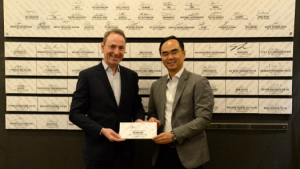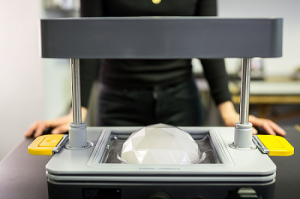3D Printing News Briefs: March 23, 2019
We’ve got plenty of business news to share in this week’s 3D Printing News Briefs, but first we’ll start off with something fun – the winners have been announced for this year’s Additive World DfAM Challenge. Moving right along, BeAM is now a Tier 2 member of the ARTC, and PostProcess Technologies has announced improved processing times for SLA resin removal. Protolabs is offering new anodizing services, in addition to teaming up with Wohlers Associates, and Arkema will soon open a new PEKK plant in the US. Continuing with new things, a new AM digital career growth platform just launched, and there’s a new open project call for the European AMable project. Finally, GoPrint3D is the new UK distributor for Mayku and its desktop vacuum casting unit.
Winners Announces for Additive World DfAM Challenge 2019
 This week during an awards dinner at the Additive World Conference in Eindhoven, Ultimaker’s Steven van de Staak, Chairman of the 5-member jury for this year’s Additive Industries’ Design for Additive Manufacturing Challenge, announced the two winners and their “inspiring use cases of industrial 3D metal printing.”
This week during an awards dinner at the Additive World Conference in Eindhoven, Ultimaker’s Steven van de Staak, Chairman of the 5-member jury for this year’s Additive Industries’ Design for Additive Manufacturing Challenge, announced the two winners and their “inspiring use cases of industrial 3D metal printing.”
Obasogie Okpamen from The Landmark University in Nigeria won first place, and an Ultimaker 2+ 3D printer, in the student category for his Twin Spark Engine Connection Rod. While the connection rod that he redesigned for an Alfa Romeo 75 Twin Spark Turbo engine has not yet been fully tested, he won “because of the example it sets” for distributed localized manufacturing of spare parts with 3D printing. Dutch company K3D took home first place, and an Ultimaker 3, in the professional category for the Dough Cutting Knife it developed for Kaak Group, a leader in the bakery equipment world. The team integrated mechanical parts into the design, which can be 3D printed without any support structures and has improved functionality. The knife sits in a dough extrusion line and due to its light weight less knives and robot arms can do the same amount of cutting. This means that the extrusion line itself is cheaper. Furthermore the knife has been optimized for a cleaner cut with less knife sticking to the dough.
BeAM Joins Advanced Remanufacturing and Technology Centre
France-based BeAM, which has subsidiaries in the US and Singapore and was acquired by AddUp this summer, is now partnering with the Advanced Remanufacturing and Technology Centre (ARTC) as a Tier 2 member in an effort to expand its research activities in southeast Asia. The center provides a collaborative platform, which will help BeAM as it continues developing its Directed Energy Deposition (DED) technology with companies from the aerospace, consumer goods, marine, and oil & goods sectors.
This summer, BeAM, which also became a member of the Aachen Centre for Additive Manufacturing earlier this month, will install its Modulo 400, featuring a controlled atmosphere system, at ARTC, so other members can safely develop non-reactive and reactive materials. The two will also work to develop process monitoring systems that can expand DED’s range of applications.
PostProcess Technologies Announces New Solution for SLA Resin Removal
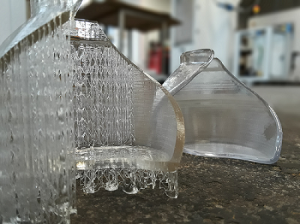 A new and improved solution for SLA resin removal by PostProcess Technologies vastly improves process times by 5-10 minutes – quite possibly the fastest on the market. The system can clean up to five times as many parts before detergent saturation when compared to solvent resin removal, and is part of the company’s automated AM post-print offering. The patent-pending solution, which also reduces environmental hazards and preserves fine feature details, was validated with eight different resin materials in several production environments, and uses the company’s proprietary AUTOMAT3D software and SVC (Submersed Vortex Cavitation) technology in the DEMI and CENTI machines.
A new and improved solution for SLA resin removal by PostProcess Technologies vastly improves process times by 5-10 minutes – quite possibly the fastest on the market. The system can clean up to five times as many parts before detergent saturation when compared to solvent resin removal, and is part of the company’s automated AM post-print offering. The patent-pending solution, which also reduces environmental hazards and preserves fine feature details, was validated with eight different resin materials in several production environments, and uses the company’s proprietary AUTOMAT3D software and SVC (Submersed Vortex Cavitation) technology in the DEMI and CENTI machines.
“PostProcess’ latest innovation of the most advanced SLA resin removal solution in the world reinforces our commitment to providing the AM industry with transformative post- printing solutions enabling the market to scale. SLA is one of the most popular 3D printing technologies in the world. No matter what volume of printing, any SLA user can benefit from the remarkable efficiencies of our solution’s decreased processing time, increased throughput, increased detergent longevity, and improved safety,” said PostProcess Technologies CEO Jeff Mize. “PostProcess has designed the world’s first complete SLA resin removal system, available only from the pioneers in forward-thinking 3D post-printing.”
The new SLA Resin Removal technology will be on display at PostProcess booth P21 at the upcoming AMUG Conference in Chicago. You can also read about it in the company’s new whitepaper.
Protolabs Offering Aluminum Anodizing; Partners with Wohlers Associates
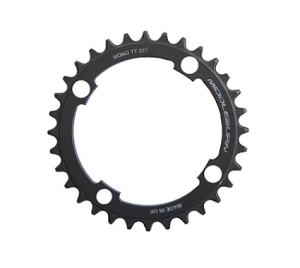 As part of its on-demand production service, digital manufacturer Protolabs is now offering aluminium anodizing in response to demand from customers in need of a single-source solution. Anodizing forms a protective oxide layer by applying a thin, protective coat to the part, which increases abrasion resistance and creates a barrier against corrosion. The company will be offering two levels of this service for Aluminum 6082 and 7075: hard anodizing to ISI 10074 for parts requiring protection from harsh environments, and decorative anodizing to ISO 7599 for parts that need an aesthetic finish. All parts will be sealed, unless they need to be painted post-anodizing.
As part of its on-demand production service, digital manufacturer Protolabs is now offering aluminium anodizing in response to demand from customers in need of a single-source solution. Anodizing forms a protective oxide layer by applying a thin, protective coat to the part, which increases abrasion resistance and creates a barrier against corrosion. The company will be offering two levels of this service for Aluminum 6082 and 7075: hard anodizing to ISI 10074 for parts requiring protection from harsh environments, and decorative anodizing to ISO 7599 for parts that need an aesthetic finish. All parts will be sealed, unless they need to be painted post-anodizing.
“Talking to our clients, we realised that if they needed to anodise an aluminium part it was often difficult for them to source and then manage a supplier. They not only have to do all the research and then raise a separate purchase order, but often find that the supplier only accepts large quantities of parts in an order, which isn’t great for low volume runs,” explained Stephen Dyson, Special Operations Manager at Protolabs.
“Keeping the entire production process with a single supplier makes perfect sense for manufacturers. It means they can get their finished parts shipped in a matter of days and our technical team can advise them through the entire process, right from the initial design of the part to the best approach for the final anodising finish.”
 In other Protolabs news, the company is partnering up with AM consultants Wohlers Associates to jointly hold an immersive course on DfAM. The class, which is invitation-only, will take place over the course of three days near Raleigh, North Carolina, and will end at Protolabs’ 77,000 sq. ft. 3D printing facility. Olaf Diefel, Associate Consultant at Wohlers Associates, and Principle Consultant and President Terry Wohlers will lead the discussion, in addition to being joined by several Protolabs engineers who are skilled in polymer and metal 3D printing.
In other Protolabs news, the company is partnering up with AM consultants Wohlers Associates to jointly hold an immersive course on DfAM. The class, which is invitation-only, will take place over the course of three days near Raleigh, North Carolina, and will end at Protolabs’ 77,000 sq. ft. 3D printing facility. Olaf Diefel, Associate Consultant at Wohlers Associates, and Principle Consultant and President Terry Wohlers will lead the discussion, in addition to being joined by several Protolabs engineers who are skilled in polymer and metal 3D printing.
“Designing for AM offers unique challenges and opportunities not found in traditional design methods. Protolabs brings tremendous depth of expertise and leadership in 3D printing. We’re thrilled to work together to equip attendees with technical skills and manufacturing knowledge needed to unlock the full potential of additive manufacturing,” said Wohlers.
Arkema Opening New PEKK Plant
 Arkema, one of the largest specialty chemical and advanced materials developers, has been busily producing polyetherketoneketone, or PEKK, in France. But this coming Monday, March 24th, it is celebrating its new Kepstan PEKK plant near Mobile, Alabama with a ribbon-cutting ceremony.
Arkema, one of the largest specialty chemical and advanced materials developers, has been busily producing polyetherketoneketone, or PEKK, in France. But this coming Monday, March 24th, it is celebrating its new Kepstan PEKK plant near Mobile, Alabama with a ribbon-cutting ceremony.
The durability and customizable abilities of PEKK make it a good material for a variety of 3D printing purposes. Monday’s event will take place from 10:30 am to 1:30, and will also include VIP comments and lunch. The increased volume of this PEAK material will shake up the high-performance polymer market making PEKK a viable alternative to PEEK and PEI.
New AM Digital Career Growth Platform Launched
 A free interactive platform to help AM professionals enhance their skills and fulfill career opportunities is now launching. i-AMdigital, which counts HP as one of its backing partners, is a joint venture between AM industry recruiter Alexander Daniels Global, digital venture company TES Network, and web and UX design company De Wortel van Drie. The platform was created to develop a growing AM talent pool, and uses smart matching and AI to offer customized career advice, courses, training, and job opportunities.
A free interactive platform to help AM professionals enhance their skills and fulfill career opportunities is now launching. i-AMdigital, which counts HP as one of its backing partners, is a joint venture between AM industry recruiter Alexander Daniels Global, digital venture company TES Network, and web and UX design company De Wortel van Drie. The platform was created to develop a growing AM talent pool, and uses smart matching and AI to offer customized career advice, courses, training, and job opportunities.
“There just isn’t enough talent out there. At the same time the learning and development landscape for additive manufacturing is very fragmented. This makes it difficult for individuals and organisations alike to access courses that can help them upskill. i-AMdigital solves both problems through our digital career growth platform,” said CEO and Co-Founder Nick Pearce of Alexander Daniels Global.
“It is an essential tool for the AM industry that will allow talent to grow their career and make an impact in additive manufacturing. It will provide organisations access to a growing and educated talent force to address their hiring needs and a marketplace for learning and development that can help them upskill their existing workforce in the latest technologies.”
AMable Launches Second Open Project Call
 The AMable project, which receives funding from the European Union Horizon 2020 research and innovation program, has just launched its second project call for proposals and ideas that can be applied to AM. The project is continuing to look for new ways to innovate on services for mid-caps and SMEs in the EU, and chosen teams will receive support from the AMable unit.
The AMable project, which receives funding from the European Union Horizon 2020 research and innovation program, has just launched its second project call for proposals and ideas that can be applied to AM. The project is continuing to look for new ways to innovate on services for mid-caps and SMEs in the EU, and chosen teams will receive support from the AMable unit.
AMable is a Factories of the Future (FoF) project participating in I4MS (ICT for Manufacturing SMEs), and is working to increase adoption of AM technologies through the EU. The project will build a digital model that will provide unbiased access to the best AM knowledge in Europe in an effort to support this adoption. For more details on the call, visit the AMable site.
Express Group Appointed New UK Distributor for Mayku
GoPrint3D, a division of Express Group Ltd, has just been named the new UK distributor for London startup Mayku. The startup created a desktop vacuum casting unit called the FormBox, which is a handy partner for your 3D printer. Once you create a 3D printed mold, you can put it inside the compact FormBox, which is powered by any vacuum cleaner and works with many materials like wax and concrete, to cast a series from it – putting the power of making in your own hands.
“We are thrilled to have partnered with Express Group on our UK and Ireland distribution, building on our existing servicing and repair relationship,” said Alex Smilansky, Mayku Co-Founder and CEO. “When we founded Mayku, our goal was to bring the power of making to as wide an audience as possible. The partnership with Express Group will allow us to deliver a first-class making experience to more people than ever before.”
Discuss these stories and other 3D printing topics at 3DPrintBoard.com or share your thoughts in the Facebook comments below.
Additive World Conference 2019 Eindhoven Day One
Additive World Conference is a great conference in Eindhoven focusing on metal 3D printing. Organized now for the seventh time by metal 3D printer OEM Additive Industries, the summit brings together people interested in metal 3D printing from all over the world. With around 200 participants the show is small scale but the speakers are high caliber coming from the forefront of using metal printing in manufacturing. If you’re a firm interested in industrializing Additive Manufacturing/3D printing, I’d recommend attending this small but high impact conference. The Additive World Conference is now a two-day event with the first day focusing on speakers at a conference center and the second day focusing on a visit to Additive Industries and their manufacturing and R&D facilities.
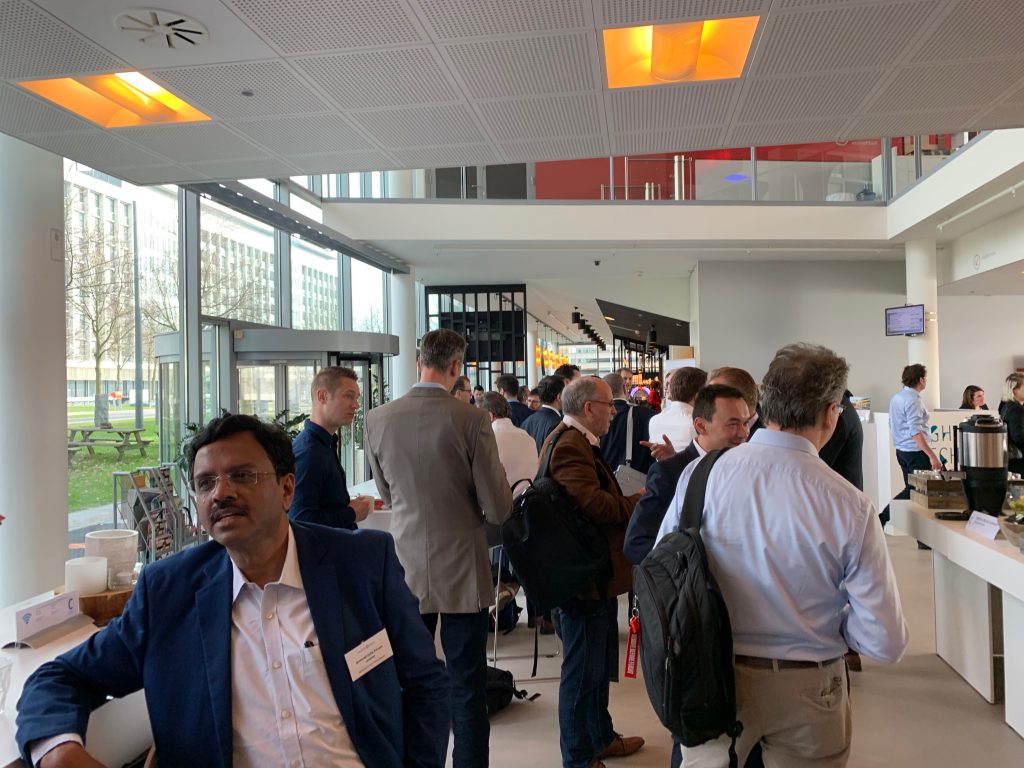
At the beginning, Additive Industries co-founder and CEO Daan Kersten welcomed us to the event and there was a rather loud and bombastic movie. The first speaker was Manuel Michiels of Materialise and he spoke on Breaking Through the AM Case Barrier with Software Simulations and Automations. Manuel wanted to show how Materialise software is saving firms money in metal 3D printing. The presentation was full of interesting assumptions and calculations that gave a real insight in the cost structure of metal AM. He took us through a detailed cost analysis of EBM. He assumed that if you have a good utilization of 70% of your build volume you could do a 186 builds per year. He also assumed that the software prepping would take 300 minutes and the hardware preparations on the machine would take a 180 minutes. The build itself would take 30 hours and afterwards there would also be another 180 minutes hardware work which would include resurfacing the build plate. He assumed that the initial post-processing steps would cost you thirty minutes for HIP (Hot Isostatic Pressing) and a further 230 minutes to remove the support from parts and remove them from the build platform. He assumed a depreciation over five years for the printer and concluded that labor, the machine, and powder were the highest cost factors. Taking all of this into account he came up with a full build cost of 2322 euros ($2637). This is a great number to input on some spreadsheets to find out if 3D printing could make sense for your business case. The yearly costs were estimated to be 431,384 Euros per year which is much higher than some previously published operating cost numbers but in my mind a more realistic number. I would say that they didn’t take into account further processing such as tumbling and other surfacing steps but since these can vary enormously per part and application I understand why they didn’t include it.
He then went on to talk about how time on the machine is “holy” and all you can do to optimize parts and workflows will save you later on in the process. Some results that he could share was that selected customers had a 90% decrease in total data preparation time and a 20% decrease in powder consumption. He also disclosed that support failure in the number one issue that causes scrappage in 3D printed parts. Indeed a lot of builds fail due to support strategies. Recoater collision, also called recoater bump, was the next biggest cause of machine failure. This occurs when the recoater spreading out material hits the part and damages it. We mention and show you how to optimize to reduce that in in your metal 3D printing builds here. The third biggest cause was shrinklines in the part. He assumed that a varied production line may have a scrap rate of 15% which would mean an annual cost of 50,000 per machine. They managed to reduce this to 7.5% in select customers. We must point out that 15% is very high and one would not expect such a number in a setting where a firm is producing millions of similar parts. If you’re making millions of bridges and crowns, for example, their similarity would mean significantly lower scrap rate. Materialise itself is focusing very much on the disparate parts of Industry 4.0 the 3D printing software leader wants to connect PLM, distributed manufacturing and machine learning. By tying together 3D printing and existing businesses processes the company surely can help others integrate 3D printing into manufacturing.
Next up was Valeria Tirelli the CEO of Aidro. We mentioned before how Aidro is using 3D printing to make better hydraulics and how the firm made a better manifold for a Jaws of life through 3D printing and how they won last years Additive World Design for Additive Manufacturing Challenge. Aidro is an Italian family-owned firm that has looked at the hydraulics industry in a new light through 3D printing. Valeria mentioned that hydraulics has been the same for decades and showed some advertisements for hydraulics from the forties which looked remarkably similar to hydraulics today. She said that by implementing 3D printing they have been looking at how they generate ideas and products differently. They now focus on problem-solving and how to create “new shapes” that solve problems in completely new ways. “Thanks to new additive design, new shapes are now possible.” This changed the firm’s entire design approach and now “new solutions that seemed impossible are possible.”
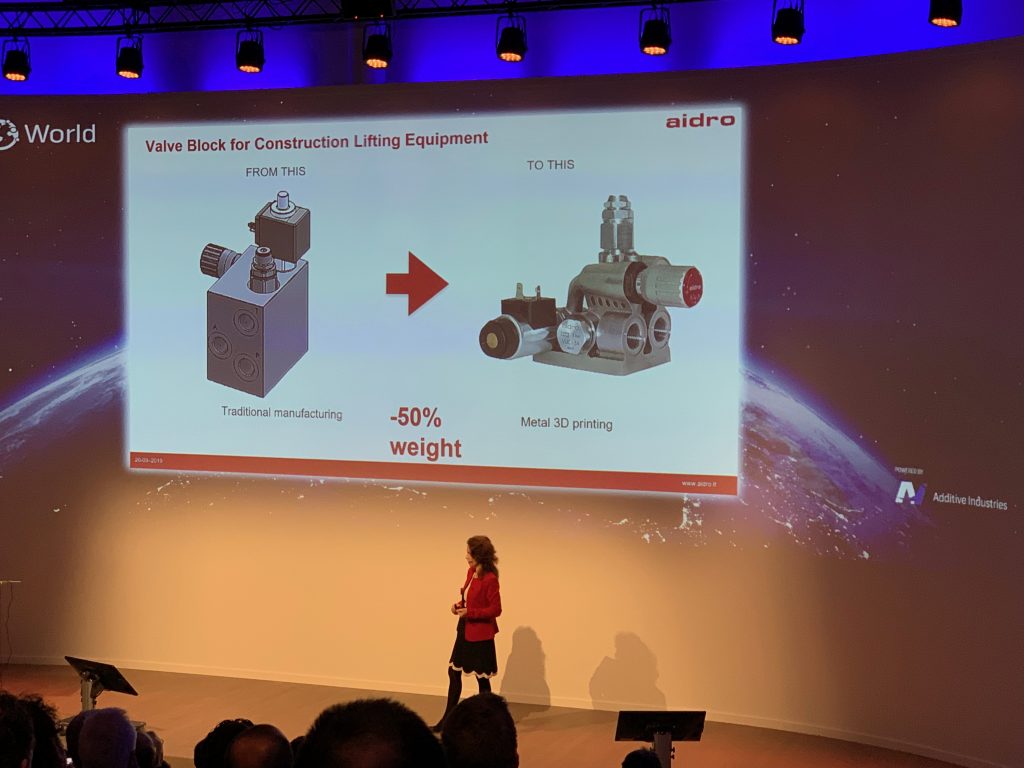
One of the biggest impacts for them in hydraulics means that whereas traditionally channels are limited in how they can be designed and made this design area is now expanded. The channels in the parts which guide the flow of the liquids through the part are essential in determining the performance of the hydraulic component. Traditionally hydraulic components had a lot of right-angled components and channels. This meant that there was a reduction in flow and turbulence in the liquid. Flow determines the overall performance of the hydraulic part or manifold. Now with 3D printing, we can get round and curved channels inside of these parts which means that their performance is greatly enhanced. Rather than flow being interrupted by abrupt right angles that create turbulence, smooth channels guide liquids around curves and bends in a much more efficient way. The results are more flow and less turbulence.
In some cases Aidro has increased flow from 30% to 70% for example. The company now has changed its design approach to start with the functionality of a part, then they connect the channels and later make ports and cavities to complete the part. With one example part they were inspired by a pepper to make a part with a 50% weight saving and a 40% improvement to flow. Another manifold was inspired by a fennel to have a weight reduction of 70%. In a heat exchanger, they accomplished a 80% weight saving and reduced the overal part length from 1.5 meters to 20 centimeters. Valeria’s presentation was very exciting and points to a huge impact that 3D printing could have over the production of millions of hydraulic systems.
Dr. Tobias Brune of SMS group was next and he presented on the companies new test atomization plant. SMS’s atomization plant lets them produce their own 3D printing powders. He mentioned that there are over 6500 kinds of steel but that the 3D printing industry only uses very few of these. Their own atomizer lets the firm make and test many different metals and produce them on demand close to their plant. The design and manufacturing of their own atomizer is a huge investment for the German automotive manufacturing firm. It is insane in the cost outlay but indeed the only logical approach if you want to manufacture with 3D printing. With so much of the cost coming from overinflated material prices building an atomization plant will have huge speed and cost advantages in the long run. SMS Group is one of the most interesting firms in 3D printing at the moment. The company is making huge investments in trying to create turn key 3D printing plants for large scale manufacturing. Currently, there simply is no solution for a large company that wants to build a plant to 3D print millions of things. Your solution would be to learn on the job and take years. With SMS an automotive firm could work with them to quickly build or create a manufacturing solution. The firm wants to go further into “equipment as a service” and their Scale$Series turnkey 3D printing plants.
Dr.Kristian Arntz of ACAM Aachen Center for Additive Manufacturing and Fraunhofer IPT spoke about the Fraunhofer center at the University of Twente and how they’re expanding a network of research partners. Professor Ian Gibson of the Deptment of Design Production Management at the University of Twente spoke on the machinability of 3D printed parts and the custom creation of porous structures. With the creation of customized controlled porosity part performance can be enhanced. He made the point that most 3D printing implementation are because you want to either change your product or change your process or both. Additionally one could use 3D printing to “provide agility” by “reconsidering the entire process.” He reiterated that the wrong method would be to buy a printer first but partnering and understanding would a more fruitful approach.

